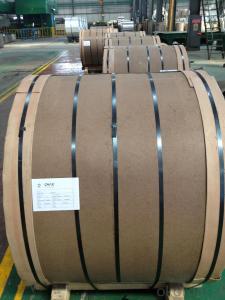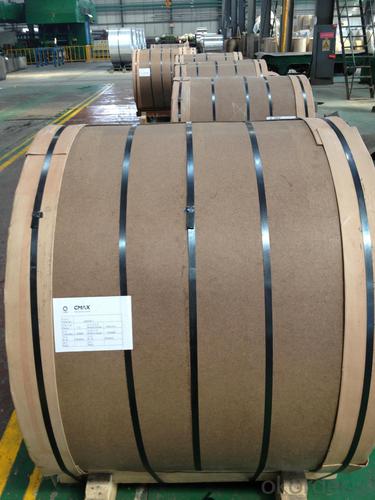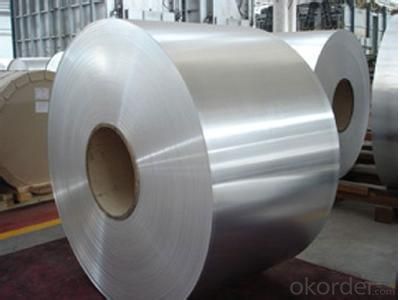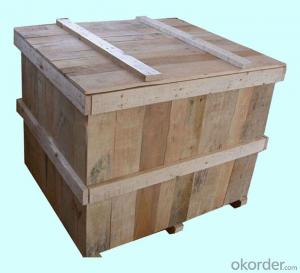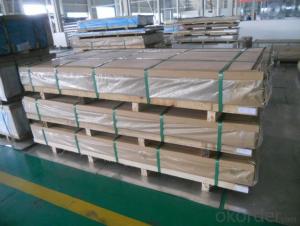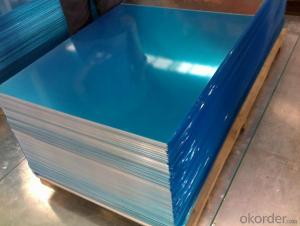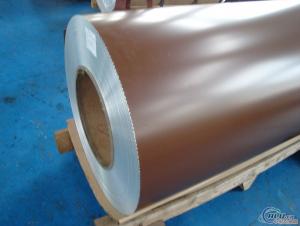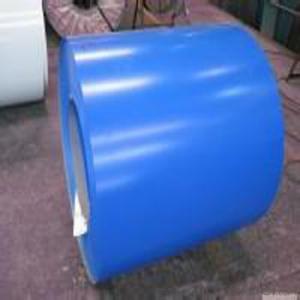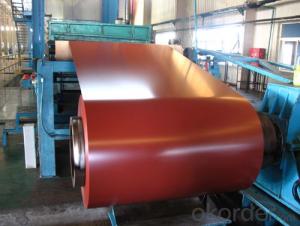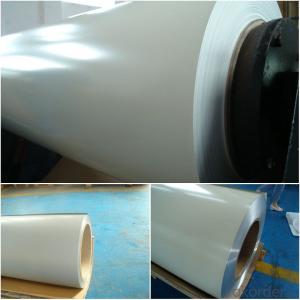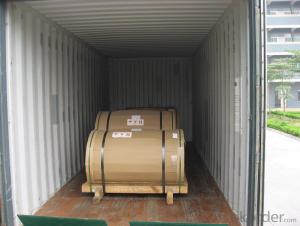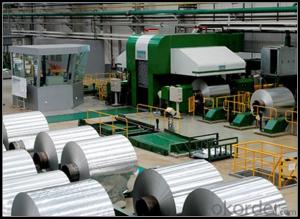Aluminum Sheets for Trailers - Aluminum Coils for Color Coated with Polyester
- Loading Port:
- Shanghai
- Payment Terms:
- TT OR LC
- Min Order Qty:
- 5 m.t.
- Supply Capability:
- 5000 m.t./month
OKorder Service Pledge
OKorder Financial Service
You Might Also Like
Specification
1.Structure of Aluminium Coils for Color Coated with Polyester
Aluminium Coils for Color Coated with Polyester are widly used in decoration field. For the painting, it depends on the using evironment. If you use in the open air, we recommend the PVDF coated aluminium coils. This kind of painting can last 15-20 years. If you use in the room, we recommend PE coated aluminium coils. The price is much more competitive.Its weight is much lower than steel. So many customers choosed aluminium material instead of steel.
2. Main features of Aluminium Coils for Color Coated with Polyester
a.Competitive price---We have our own mills and can produce mill finished aluminium coils, so we can control the production cost better.
b.Professional after-sale service---We have more than 15 years exportation experience and you need not worry about the exporation problems.
c.Fast delivery time---We can control the delivery time within 35 days.
3. Image of Aluminium Coils for Color Coated with Polyester
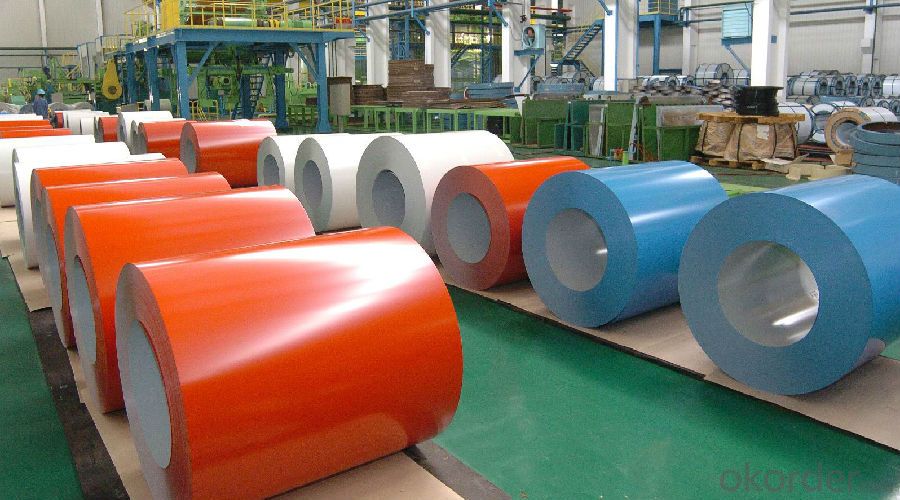
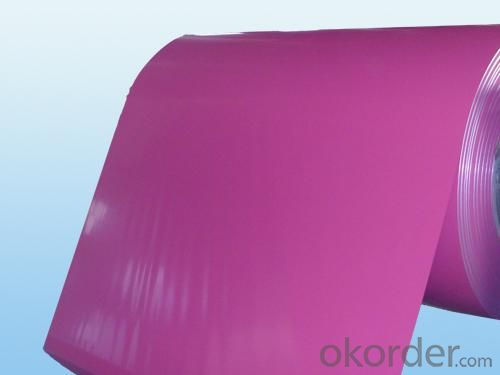
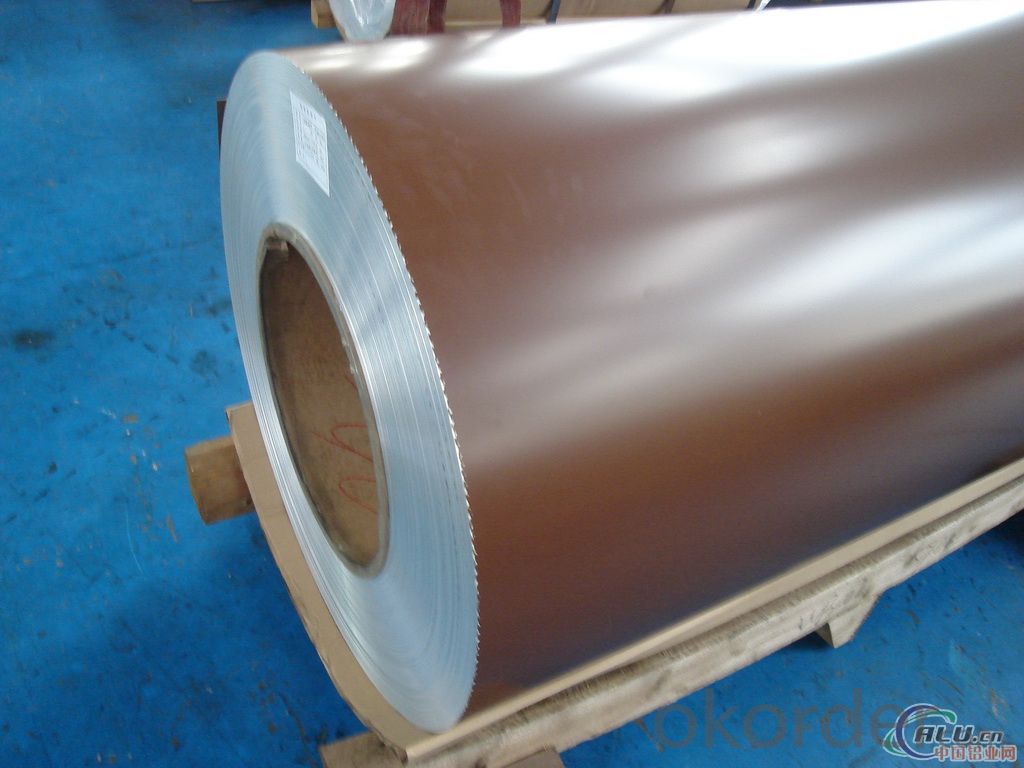
4. Product Specification of Aluminium Coils for Color Coated with Polyester
| Alloy | Temper | Thickness | Width | Coating Thickness |
| AA3003 | H14 | 0.2-3MM | 1000-1800MM | 20-25 MICRONS |
5.FAQ of Aluminium Coils for Color Coated with Polyester
What is the quality standard?
---Usually our standard is GB3880-2006
What is the largest width?
---It is 2300mm
What is the MOQ?
---Usually we can accept 80 tons.
- Q: Are the aluminum sheets suitable for welding?
- Yes, aluminum sheets are suitable for welding.
- Q: What are the different grades or alloys of aluminum available for sheets?
- Aluminum sheets come in various grades and alloys, each with its own unique properties. Grade 3003, for example, is widely used and offers good corrosion resistance and moderate strength. It finds applications in general sheet metal work, cooking utensils, signage, and chemical equipment. On the other hand, grade 5052 is known for its excellent corrosion resistance and high strength. It is often utilized in marine applications like boat hulls and components, as well as aircraft parts and transportation equipment. Grade 6061 is a versatile aluminum grade that combines strength, weldability, and machinability. It is commonly chosen for structural components such as frames, railings, and automotive parts. It is also frequently employed in the architectural field for construction purposes. Apart from these grades, there are numerous specialized aluminum alloys available for specific applications. These alloys may possess enhanced characteristics like improved strength, heat resistance, or electrical conductivity. Examples of such alloys include 2024, 7075, and 6063. When choosing the appropriate aluminum sheet grade or alloy, it is crucial to consider factors such as desired strength, corrosion resistance, formability, and specific application requirements. Seeking advice from a knowledgeable supplier or expert can ensure the correct grade of aluminum is selected for the intended usage.
- Q: 3mm heavy aluminum plate, multiple cubic meters per cubic meter?
- If calculated according to 2.73 density, the theory of a 3MM*1000MM*1000MM weight is 8.19KG. and the specifications of the aluminum flat stacked together what number should be in the 300-333 cubic meters of estimated.
- Q: Can aluminum sheets be easily shaped or bent?
- Indeed, aluminum sheets possess a remarkable capability to be effortlessly molded or flexed. Renowned for its exceptional malleability and ductility, aluminum exhibits a remarkable propensity to be readily fashioned into diverse contours and curves. The manipulation of this versatile metal can be accomplished through an assortment of techniques, encompassing rolling, pressing, and even manual utilization of tools. Given its pliability, aluminum emerges as the preferred choice within industries such as automotive, aerospace, and construction, wherein the fabrication of intricate shapes and bends is a common necessity. Moreover, the lightweight nature and inherent resistance to corrosion further enhance aluminum's suitability for shaping and bending endeavors.
- Q: Can aluminum sheets be bent or formed without cracking or breaking?
- Yes, aluminum sheets can be bent or formed without cracking or breaking, but it depends on the thickness of the sheet and the method used for bending or forming. Aluminum is a highly malleable metal, which means it can be easily bent or formed into various shapes without breaking. However, if the sheet is too thin or the bending or forming process is done without proper care or precision, there is a risk of cracking or breaking. To avoid this, it is important to use appropriate tools and techniques, such as using a bending brake or a rolling machine, and ensuring that the sheet is not subjected to excessive force or stress during the process. Additionally, annealing the aluminum sheet before bending or forming can increase its flexibility and reduce the chance of cracking. Overall, with the right approach and precautions, aluminum sheets can be successfully bent or formed without cracking or breaking.
- Q: What is the maximum temperature aluminum sheets can withstand?
- The ability of aluminum sheets to tolerate high temperatures is influenced by various factors, such as the composition and thickness of the alloy, as well as the specific application and environment. Pure aluminum, in general, has a melting point of approximately 660 degrees Celsius (1220 degrees Fahrenheit), but its strength and rigidity decrease at lower temperatures. Commercial aluminum alloys, on the other hand, have higher melting points and can endure greater temperatures. For instance, the melting point of 6061 aluminum alloy is roughly 580 degrees Celsius (1076 degrees Fahrenheit), while the melting point of 7075 aluminum alloy is slightly higher at around 640 degrees Celsius (1184 degrees Fahrenheit). Nevertheless, it is important to highlight that the maximum temperature that aluminum sheets can handle without significant distortion or structural harm may be lower than their melting point. This is due to the fact that aluminum's mechanical properties and strength deteriorate at elevated temperatures. When using aluminum sheets in applications involving high temperatures, it is crucial to consider the specific alloy and its thermal characteristics, as well as any potential alterations in strength, hardness, or other pertinent properties that may occur at elevated temperatures. Consulting material specifications, engineering guidelines, or seeking advice from metallurgical experts can provide more accurate and specific information regarding the maximum temperature capabilities of aluminum sheets for a particular application.
- Q: What are the different methods of polishing aluminum sheets?
- There are several methods for polishing aluminum sheets, including mechanical polishing, chemical polishing, and electro-polishing. Mechanical polishing involves using abrasives, such as sandpaper or polishing compounds, to physically remove imperfections and create a smooth surface. Chemical polishing utilizes a mixture of acids and other chemicals to dissolve the surface layer of the aluminum, resulting in a polished finish. Electro-polishing involves using an electric current to remove surface material and create a smooth, shiny surface. Each method has its own advantages and may be chosen depending on the desired finish and the specific requirements of the aluminum sheet.
- Q: This question asks for a comparison of the cost of aluminum sheets with other building materials.
- <p>Aluminum sheets are generally considered cost-effective compared to other building materials, especially when considering their long-term benefits. They are relatively inexpensive to produce and install, and their low maintenance requirements can save costs over time. However, their initial cost may be higher than some materials like wood or vinyl. Aluminum's resistance to corrosion and weathering means it lasts longer, which can offset the higher upfront cost. In contrast, materials like steel might be more expensive due to their weight and the cost of corrosion protection, while concrete and masonry are typically more costly for both materials and labor. The cost-effectiveness of aluminum can vary based on regional prices, specific project requirements, and the type of aluminum product (e.g., thickness, finish).</p>
- Q: Are aluminum sheets resistant to staining?
- Yes, aluminum sheets are resistant to staining. Aluminum has a natural oxide layer that forms on its surface when exposed to air. This oxide layer acts as a protective barrier, preventing staining and corrosion. However, it is important to note that prolonged exposure to certain chemicals or acidic substances can still cause discoloration or staining on aluminum sheets. Regular cleaning and maintenance are recommended to preserve the appearance and longevity of aluminum sheets.
- Q: Are aluminum sheets suitable for high-temperature applications?
- High-temperature applications are generally not suitable for aluminum sheets. Despite its relatively high melting point of 660.3°C (1220.5°F), the strength and mechanical properties of aluminum decrease significantly as the temperature rises. Aluminum tends to soften, deform, and lose its structural integrity at elevated temperatures. Moreover, its relatively low thermal conductivity hinders efficient heat conduction away from the source, resulting in potential overheating problems. Hence, stainless steel or refractory metals like titanium or tungsten are commonly preferred for high-temperature applications due to their superior performance and thermal conductivity.
Send your message to us
Aluminum Sheets for Trailers - Aluminum Coils for Color Coated with Polyester
- Loading Port:
- Shanghai
- Payment Terms:
- TT OR LC
- Min Order Qty:
- 5 m.t.
- Supply Capability:
- 5000 m.t./month
OKorder Service Pledge
OKorder Financial Service
Similar products
Hot products
Hot Searches
Related keywords
